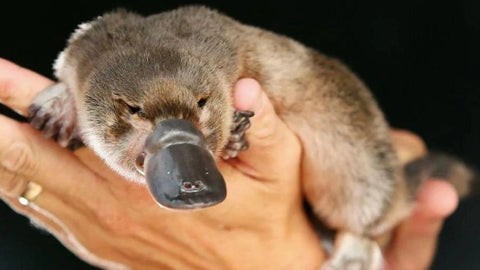The platypus, with its duck-like bill, beaver-like tail, and otter-like body, is undoubtedly one of the most fascinating and unique creatures in the world. Native to Australia, this semi-aquatic mammal captures the imagination of people globally. Given their intriguing nature, it’s a question that often arises: can platypuses be kept as pets?
Why Platypuses Are Not Suitable Pets
While their quirky appearance and playful nature in their natural habitat might make you consider bringing a platypus home, the reality is that they are absolutely not suitable pets. Several compelling reasons, ranging from legal restrictions to their complex needs, make keeping a platypus as a pet impossible for the average person.
Legal Protection
The most immediate barrier to platypus ownership is legality. In Australia, platypuses are protected native animals. It is strictly illegal for individuals to keep them as pets. These laws are in place to protect wild populations and ensure the conservation of this vulnerable species. Exporting platypuses from Australia is also virtually impossible, except for very specific purposes like zoos and scientific research institutions. Therefore, acquiring a platypus legally for personal keeping is simply not an option.
Specialized Care Requirements
Even if legal hurdles were overcome, the practicalities of caring for a platypus in a domestic setting are immense. Platypuses have highly specialized needs that are extremely difficult to replicate outside of their natural environment.
- Diet: In the wild, platypuses are carnivores, consuming a diet of insect larvae, freshwater shrimp, worms, and crayfish. They require a large quantity of live food daily, which would be challenging and expensive to source consistently.
- Habitat: Platypuses are semi-aquatic animals that need access to clean, freshwater rivers and creeks to thrive. Recreating this environment in a home setting would be incredibly complex and costly. They require large bodies of water with specific temperatures, flow rates, and natural features to hunt and live comfortably.
- Nocturnal and Solitary Nature: Platypuses are primarily nocturnal and are generally solitary animals, except during mating season. Their natural behaviors and activity patterns are not conducive to typical pet interactions.
Venomous Defense Mechanism
Another crucial factor to consider is the venomous nature of male platypuses. During the mating season, male platypuses possess a spur on their hind legs connected to venom glands. While this venom is not lethal to humans, it can cause excruciating pain and illness. This venomous capability poses a significant risk for anyone attempting to handle or keep a platypus, especially in a non-professional setting.
Wild Animals, Not Domesticated
Ultimately, platypuses are wild animals that have not been domesticated. Their instincts, behaviors, and needs are intrinsically linked to their natural wild habitat. Attempting to confine them to a domestic environment would be detrimental to their well-being and would not provide them with the quality of life they deserve.
 A close-up of a platypus's bill and face, highlighting its unique features.
A close-up of a platypus's bill and face, highlighting its unique features.
Fascinating Platypus Facts: Appreciating Them in the Wild
While you can’t keep a platypus as a pet, there’s still so much to appreciate about these remarkable animals. Here are some fascinating facts that highlight why they are so special:
- Monotremes: Platypuses are monotremes, a unique group of mammals that lay eggs instead of giving birth to live young. They are one of only five surviving monotreme species in the world (the others being echidnas).
- Electroreception: Like sharks, platypuses have electroreceptors in their bill, allowing them to detect the electrical pulses of their prey underwater, even in murky conditions. This “sixth sense” is crucial for hunting in their dark aquatic environments.
- Double Layer Fur: Their incredibly dense fur has two layers: a waterproof outer layer and a dense insulating underlayer. This specialized fur traps air, keeping them buoyant and warm in cold waters, allowing them to spend up to 12 hours a day foraging underwater.
- Biofluorescence: Under ultraviolet light, platypuses exhibit biofluorescence, emitting a greenish-blue glow. The reason for this phenomenon is still a mystery to scientists.
- Puggles: Baby platypuses are called puggles, a term as endearing as the creatures themselves.
- Conservation Concerns: Platypus populations are facing increasing threats from habitat loss due to droughts, bushfires, climate change, and land clearing. This makes their conservation even more critical.
- A Zoological Puzzle: When platypuses were first discovered by Western scientists in 1798, they were initially considered a hoax. Their unusual combination of features seemed too bizarre to be real, leading some to believe they were assembled from different animals.
Conclusion: Admire Platypuses in Their Natural Habitat
In conclusion, while the idea of owning a platypus might be tempting due to their captivating nature, it is simply not possible or responsible. Legal protections, their demanding care needs, venomous spurs, and their fundamental wildness all contribute to why platypuses are not pets.
Instead of trying to keep them as pets, the best way to appreciate platypuses is to learn about them, support conservation efforts, and, if you are lucky enough to be in Australia, observe them in their natural habitats from a respectful distance. For those who truly desire a platypus in their lives, a stuffed Platypus plush toy can be a wonderful, and legal, alternative!
